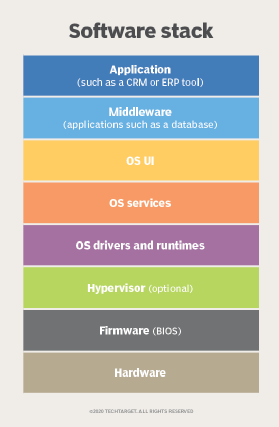Understanding Application Stacks
In the world of software development, the term “application stack” (or “technology stack”) refers to the combination of programming languages, frameworks, libraries, servers, software, and tools used by developers to build and run an application. Choosing the right stack is crucial as it directly impacts the application’s performance, scalability, and maintainability.

Components of an Application Stack
An application stack typically consists of the following layers:
- Frontend:
- Languages and Frameworks: HTML, CSS, JavaScript
- Libraries and Tools: React, Angular, Vue.js, Bootstrap, jQuery
- Role: The frontend layer handles the user interface and user experience aspects of the application. It ensures that users can interact with the application smoothly and efficiently.
- Backend:
- Languages and Frameworks: Java, Python, Ruby, PHP, Node.js, .NET
- Databases: MySQL, PostgreSQL, MongoDB, Redis
- Servers: Apache, Nginx
- Role: The backend layer manages the server-side logic, database interactions, authentication, authorization, and application business logic. It ensures that data is processed correctly and securely.
- Development Tools:
- Version Control: Git, Subversion (SVN)
- CI/CD Tools: Jenkins, Travis CI, CircleCI
- Project Management: Jira, Trello, Asana
- Role: Development tools help streamline the development process, facilitate collaboration, automate testing, and ensure continuous integration and delivery.
- Operating System:
- Examples: Linux, Windows, macOS
- Role: The operating system provides the foundational platform on which the application runs. It manages hardware resources and facilitates communication between software components.
- Cloud Services:
- Providers: AWS, Google Cloud Platform (GCP), Microsoft Azure
- Services: Compute (EC2, GCE), Storage (S3, Google Cloud Storage), Databases (RDS, Cloud SQL), Networking (VPC, Cloud VPN)
- Role: Cloud services offer scalable infrastructure, storage, and various tools for deploying, managing, and scaling applications.
Popular Application Stacks
1. LAMP Stack
- Components:
- Linux: Operating system
- Apache: Web server
- MySQL: Database
- PHP: Programming language
- Use Case: Traditionally used for web applications and remains popular for its simplicity and ease of use.
2. MEAN Stack
- Components:
- MongoDB: NoSQL database
- Express.js: Web application framework for Node.js
- Angular: Frontend framework
- Node.js: JavaScript runtime
- Use Case: Ideal for building dynamic single-page applications and web applications using JavaScript across the stack.
3. MERN Stack
- Components:
- MongoDB: NoSQL database
- Express.js: Web application framework for Node.js
- React: Frontend library
- Node.js: JavaScript runtime
- Use Case: Similar to the MEAN stack but uses React for the frontend, preferred for its flexibility and performance in building complex user interfaces.
4. Ruby on Rails Stack
- Components:
- Ruby: Programming language
- Rails: Web application framework
- PostgreSQL/MySQL: Database
- Puma/Unicorn: Web server
- Use Case: Favored for rapid development and convention-over-configuration principles, making it a great choice for startups and MVPs (Minimum Viable Products).
Choosing the Right Stack
Selecting the appropriate application stack depends on various factors, including:
- Project Requirements: The nature and complexity of the application.
- Team Expertise: The skills and experience of the development team.
- Scalability Needs: The anticipated growth and scaling requirements.
- Community and Support: The availability of community support and resources.
Conclusion
Application stacks form the backbone of software development, influencing how applications are built, maintained, and scaled. By understanding the components and popular stacks, developers and organizations can make informed decisions to ensure the success of their projects.
